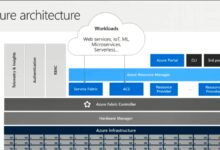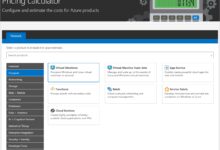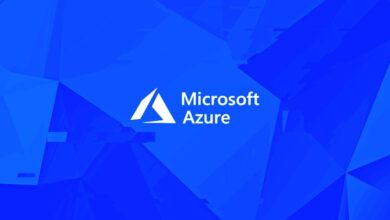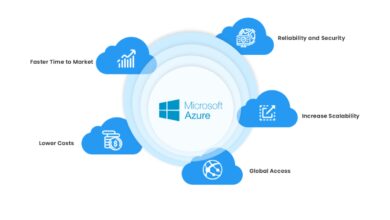Sign In to Azure Portal: 7 Essential Steps to Master Access Now
Want to sign in to Azure Portal quickly and securely? Whether you’re a cloud newbie or a seasoned admin, mastering access is your first step toward managing powerful Microsoft cloud services with confidence and control.
Understanding the Azure Portal and Why You Need to Sign In

Microsoft Azure is one of the most comprehensive cloud computing platforms in the world, offering over 200 services ranging from virtual machines and AI tools to data analytics and IoT solutions. At the heart of managing these services lies the Azure Portal — a web-based interface that allows users to configure, monitor, and manage all their Azure resources in one centralized location.
To access this powerful dashboard, you must first sign in to Azure Portal. This authentication process ensures that only authorized users can interact with sensitive data, deploy infrastructure, or modify configurations. Without signing in, you’re locked out of your cloud environment, unable to perform even the most basic tasks like launching a virtual machine or checking billing details.
What Is the Azure Portal?
The Azure Portal is a graphical user interface (GUI) provided by Microsoft for managing Azure services. It’s designed to be intuitive for both technical and non-technical users, offering drag-and-drop functionality, customizable dashboards, and real-time monitoring tools. You can access it from any modern web browser at portal.azure.com.
Unlike command-line tools such as Azure CLI or PowerShell, the portal provides a visual way to explore your cloud ecosystem. It displays resource groups, subscriptions, activity logs, cost analysis, and security recommendations all in one place. For teams collaborating on cloud projects, the portal becomes the central hub for coordination and oversight.
Who Uses the Azure Portal?
- Cloud Administrators: Manage user access, enforce policies, monitor performance, and ensure compliance.
- Developers: Deploy applications, configure databases, and integrate DevOps pipelines.
- IT Professionals: Set up virtual networks, manage identity systems, and troubleshoot connectivity issues.
- Business Analysts: Track usage metrics, analyze spending trends, and generate reports.
Regardless of role, everyone must first sign in to Azure Portal before they can begin their work. The login process acts as the gatekeeper to this entire digital workspace.
“The Azure Portal is the control center for your cloud journey. If you can’t sign in, you can’t move forward.” — Microsoft Cloud Documentation
How to Sign In to Azure Portal: Step-by-Step Guide
Signing in to the Azure Portal is a straightforward process, but understanding each step helps prevent errors and enhances security. Whether you’re using a personal Microsoft account or an organizational (work or school) account, the procedure is largely similar.
Step 1: Navigate to the Azure Portal Login Page
Open your preferred web browser and go to https://portal.azure.com. This is the official URL for the Azure management portal. Avoid third-party links or search engine ads, as they may lead to phishing sites designed to steal credentials.
Upon arrival, you’ll see a clean login screen with fields for your email, phone, or Skype ID. This is where the process of signing in begins. The site automatically detects if you’ve previously logged in from this device and may suggest saved accounts.
sign in to azure portal – Sign in to azure portal menjadi aspek penting yang dibahas di sini.
Step 2: Enter Your Credentials
Type in your username — typically an email address associated with either a Microsoft account (like Outlook.com) or an Azure Active Directory (Azure AD) account (such as john@company.com). After entering your email, click ‘Next’.
You’ll then be prompted to enter your password. Make sure Caps Lock is off and that you’re using the correct keyboard layout, especially if you use special characters. If you’re logging in from a new device or location, additional verification steps may appear.
Step 3: Complete Multi-Factor Authentication (MFA)
Many organizations require multi-factor authentication for enhanced security. After entering your password, you might receive a notification via:
- Microsoft Authenticator app
- Text message (SMS)
- Phone call
- Hardware security key
Approve the sign-in request or enter the one-time code to proceed. MFA significantly reduces the risk of unauthorized access, even if your password is compromised.
Once authenticated, you’ll be redirected to the Azure Portal dashboard, where your subscribed services and resources are displayed.
Common Issues When Trying to Sign In to Azure Portal
Despite its reliability, users sometimes face obstacles when attempting to sign in to Azure Portal. These issues can stem from technical glitches, configuration errors, or security policies. Identifying the root cause is key to resolving them quickly.
Incorrect Username or Password Errors
This is the most common login problem. Double-check that you’re using the correct email address and password. Remember that Azure distinguishes between personal Microsoft accounts and work/school accounts. If you have both, make sure you’re selecting the right one.
If you’re certain your credentials are correct but still can’t sign in, try resetting your password through the ‘Forgot password?’ link. For organizational accounts, this may require approval from an administrator.
Account Locked or Disabled
Repeated failed login attempts can trigger account lockout policies. Additionally, an administrator may have disabled your account due to inactivity, policy violations, or security concerns.
sign in to azure portal – Sign in to azure portal menjadi aspek penting yang dibahas di sini.
To resolve this, contact your Azure AD administrator. They can unlock your account, reactivate it, or verify your permissions within the directory. You can also check the status of Azure services at Azure Status Page to see if there’s an ongoing outage affecting authentication.
MFA and Conditional Access Challenges
Conditional Access policies in Azure AD can block sign-ins based on device compliance, location, or risk level. For example, if you’re logging in from an untrusted network or an unmanaged device, access may be denied even with correct credentials.
Similarly, if your MFA method isn’t configured properly — such as a lost phone or expired app registration — you won’t be able to complete the login. In such cases, administrators should set up alternative verification methods like backup codes or secondary devices.
“Over 99.9% of compromised accounts lack multi-factor authentication.” — Microsoft Security Intelligence Report
Security Best Practices After Signing In to Azure Portal
Successfully signing in to the Azure Portal is just the beginning. Once inside, it’s crucial to follow security best practices to protect your cloud environment from threats and misuse.
Use Role-Based Access Control (RBAC)
Azure’s Role-Based Access Control (RBAC) allows administrators to assign permissions based on job functions. Instead of giving full administrative rights to everyone, RBAC enables granular control — for example, allowing a developer to read virtual machine settings without granting them the ability to delete resources.
Common built-in roles include:
- Owner: Full access to all resources and management of access rights.
- Contributor: Can create and manage all types of Azure resources but cannot grant access to others.
- Reader: View-only access to resources.
By assigning the least privilege necessary, organizations reduce the risk of accidental deletions or malicious actions.
Enable Azure AD Identity Protection
Azure AD Identity Protection monitors for risky sign-in behaviors, such as logins from anonymous IPs, unfamiliar locations, or malware-infected devices. When suspicious activity is detected, it can automatically trigger alerts or block access.
After you sign in to Azure Portal, navigate to Azure Active Directory > Security > Identity Protection to review risk detections and configure policies. You can set up risk-based conditional access rules that require MFA or block sign-ins entirely when high-risk events occur.
sign in to azure portal – Sign in to azure portal menjadi aspek penting yang dibahas di sini.
Monitor Sign-In Activity Logs
Azure provides detailed logs of every sign-in attempt through the Azure AD Sign-In Logs feature. These logs show:
- Timestamp of each login
- IP address and location
- Device information
- Authentication methods used
- Success or failure status
Regularly auditing these logs helps detect unauthorized access attempts and ensures compliance with internal security policies and regulatory standards like GDPR or HIPAA.
Using Different Account Types to Sign In to Azure Portal
Not all users sign in the same way. Depending on your account type, the authentication experience varies. Understanding these differences ensures smooth access regardless of your identity source.
Personal Microsoft Accounts (MSA)
A Personal Microsoft Account (formerly known as a Live ID) is used for consumer services like Outlook.com, Xbox Live, or OneDrive. While you can use an MSA to sign in to Azure Portal, it’s typically limited to free trials, individual subscriptions, or small-scale projects.
To use an MSA, simply go to portal.azure.com and enter your @outlook.com, @hotmail.com, or @live.com email. You’ll be prompted for your password and possibly MFA if enabled. However, MSAs lack advanced enterprise features like group policy management or hybrid identity integration.
Work or School Accounts (Azure AD)
Most professional users access Azure through a work or school account managed by Azure Active Directory. These accounts are created and controlled by an organization’s IT department and support advanced security and compliance features.
When you sign in to Azure Portal with a work account, your access is governed by organizational policies, including password expiration, MFA requirements, and conditional access rules. This makes it ideal for enterprise environments where security and governance are top priorities.
Guest Users and External Identities
Organizations often invite external collaborators — such as consultants, partners, or vendors — to access their Azure environment. These users are added as guest accounts in Azure AD and can sign in using their own Microsoft or social identities (e.g., Google).
Guest users appear in the directory with a #EXT# suffix in their username. Administrators can assign them specific roles and monitor their activity just like regular users. This feature, known as Azure AD B2B collaboration, enables secure cross-organizational teamwork without compromising internal security.
sign in to azure portal – Sign in to azure portal menjadi aspek penting yang dibahas di sini.
Advanced Authentication Methods for Signing In
Beyond traditional username and password, Azure supports several advanced authentication methods that enhance both security and user experience when you sign in to Azure Portal.
Passwordless Authentication with Microsoft Authenticator
Microsoft Authenticator app allows passwordless sign-ins using biometrics (fingerprint or facial recognition) or device PIN. After initial setup, users receive a push notification when logging in, which they approve directly on their mobile device.
This method eliminates the risk of password theft and phishing attacks. To enable it, go to My Account > Security Info and add the Authenticator app as a sign-in method.
FIDO2 Security Keys
FIDO2-compliant security keys (like YubiKey) provide phishing-resistant authentication. These physical devices plug into USB ports or connect via NFC/Bluetooth and verify your identity without relying on passwords.
They’re especially useful for high-security environments such as financial institutions or government agencies. Once registered in Azure AD, users can sign in to Azure Portal simply by inserting the key and tapping it.
Windows Hello for Business
For enterprise users on Windows 10/11 devices, Windows Hello for Business offers a seamless, secure login experience using biometrics or a PIN tied to the device. It replaces passwords with cryptographic keys stored securely in the Trusted Platform Module (TPM).
This method integrates tightly with Azure AD and provides single sign-on (SSO) across cloud and on-premises resources, reducing friction while improving security posture.
Troubleshooting and Recovery: What to Do If You Can’t Sign In
Even with best practices in place, there may come a time when you’re unable to sign in to Azure Portal. Whether due to lost credentials, disabled accounts, or technical issues, knowing how to recover access is critical.
Resetting Your Password
If you’ve forgotten your password, click ‘Forgot password?’ on the login screen. The recovery process depends on your account type:
sign in to azure portal – Sign in to azure portal menjadi aspek penting yang dibahas di sini.
- For personal accounts, you’ll verify identity via email, phone, or alternate contact.
- For work/school accounts, you may need to contact your administrator or use a self-service password reset (SSPR) portal if enabled.
Ensure that your recovery options are up to date. Outdated phone numbers or inaccessible email addresses can delay recovery.
Contacting Azure Support
If self-help methods fail, reach out to Microsoft Azure Support. Paid subscription holders can open support tickets directly from the Azure Portal under Help + Support > New Support Request.
Support tiers vary by plan, but all include access to technical experts who can assist with authentication issues, billing problems, and service disruptions. Be ready to provide subscription ID, error messages, and screenshots to speed up resolution.
Using Emergency Access Accounts
Organizations should maintain emergency access accounts — also known as break-glass accounts — for critical situations. These are highly privileged accounts kept offline and used only when normal administrative access is compromised.
Best practices include:
- Storing credentials in a secure vault
- Enabling MFA with backup methods
- Monitoring usage strictly
These accounts ensure business continuity during outages or security incidents.
How do I sign in to Azure Portal?
To sign in to Azure Portal, go to portal.azure.com, enter your email address (personal or work/school account), input your password, and complete any additional verification steps like multi-factor authentication (MFA). Once authenticated, you’ll be directed to the Azure dashboard.
What should I do if I forget my Azure password?
sign in to azure portal – Sign in to azure portal menjadi aspek penting yang dibahas di sini.
If you forget your password, click ‘Forgot password?’ on the login page. Follow the prompts to reset it using your recovery email, phone number, or security questions. For organizational accounts, you may need administrator assistance or use a self-service password reset portal if configured.
Can I use MFA to secure my Azure login?
Yes, multi-factor authentication (MFA) is highly recommended for securing your Azure account. It adds an extra layer of protection by requiring a second form of verification, such as an app notification, text message, or security key, making unauthorized access much more difficult.
Why am I unable to sign in to Azure Portal?
Common reasons include incorrect credentials, account lockout, expired passwords, MFA setup issues, or conditional access policies blocking your device or location. Check your internet connection, verify your account status, and consult your administrator if needed.
Is there a mobile app for Azure Portal?
Yes, Microsoft offers the Azure app for iOS and Android devices. It allows you to monitor resources, receive alerts, and manage services on the go. While full administrative tasks are best done on desktop, the app provides essential visibility and control from anywhere.
Signing in to Azure Portal is the essential first step in managing your cloud infrastructure. From initial login to advanced security configurations, understanding the process empowers you to work efficiently and securely. By following best practices like using MFA, monitoring sign-in logs, and preparing for emergencies, you can maintain uninterrupted access and protect your digital assets. Whether you’re a beginner or an expert, mastering how to sign in to Azure Portal sets the foundation for everything you do in the Microsoft cloud ecosystem.
sign in to azure portal – Sign in to azure portal menjadi aspek penting yang dibahas di sini.
Further Reading:









